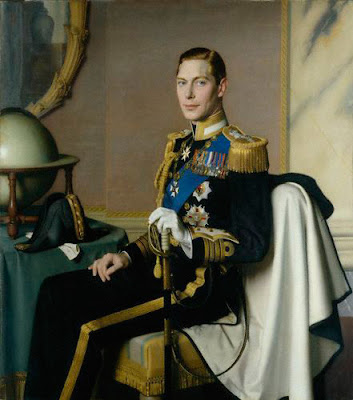Does fame make artists conform? Critics impact our careers, but what makes their judgments ‘right’?
 |
|
Woman Reclining of 1928 (Marguerite Kelsey), 1928, Meredith Frampton, courtesy Tate
|
I’ve dedicated my brief staycation to reading detective stories by the late Georgette Heyer. Heyer is famous as a romance writer. Artist Meredith Frampton was her contemporary and countryman, and he is just being discovered. There are many parallels between their work: they are both sleek, smooth, and perfectly finished. Intellectuals may scoff, but their work burbles with joy.
Meredith Frampton was the only child of the distinguished British sculptor, Sir George Frampton, and his wife, painter Christabel Cockerell. While Frampton was raised in affluent, arty St. John’s Wood, he was also the grandson of a stonemason. His painting reflects an ethos of craftsmanship and hard work.
Frampton attended the Royal Academy Schools, where he won both a first prize and a silver medal. During WWI, he enlisted in the Artists’ Rifles. This was a famous Victorian volunteer corps that had expanded to include members of other professions. Frampton served on the Western Front with a field survey unit, scrutinizing aerial photographs and making meticulous maps of enemy trenches.
During the postwar period, he resumed his career as a painter, focusing on portraits of academics and beautiful women. He was, however, a victim of his time and place in culture.
 |
|
A Game of Patience, 1937, Meredith Frampton, courtesy Ferens Art Gallery
|
“At that time, the Tate was fixated on this idea that what mattered in 20th-Century art was the forward movement from one progressive ‘ism’ to the next, a kind of handing on of the torch,” saidcurator Richard Morphet, who has championed Frampton throughout his career. “And art like Frampton’s, which didn’t exemplify stylistic innovation, was regarded as having nothing to do with that story. That’s why I wasn’t allowed to show it.”
Frampton had only one significant show, two years before his death. It has never been repeated.
Frampton was a slow, meticulous painter who worked largely by commission. That meant he never had inventory lying around for a gallery to pick up and show. He did, however, participate in the annual Royal Academy Summer Exhibition, sending 32 paintings over a period of 25 years.
It would be easy to dismiss his paintings as reactionary realism in an era of enormous upheaval. However, Frampton was very much a visionary. There is a strong sense of surrealism in his glacial, immaculate, perfectly-ordered surrounds.
 |
|
King George VI as the Duke of York, 1929, Meredith Frampton
|
Like his fellow realist Andrew Wyeth, Frampton sold paintings even as the rainmakers ignored him. His career tells us something about the power critics and gallerists hold over artists. Perhaps even more important, his subsequent rediscovery tells us something about the limits to that power.
It’s much easier to paint within the conventions of your time and place, but Frampton reminds us that’s not the only path to greatness. Moderate success, followed by obscurity and then rediscovery, was the career path of Rembrandt and Bach.
I’m still pondering the impact obscurity had on the paintings of Erik Lundin. In his case, and that of Meredith Frampton, the lack of adulation seems to have given them the freedom to follow their own muses.

